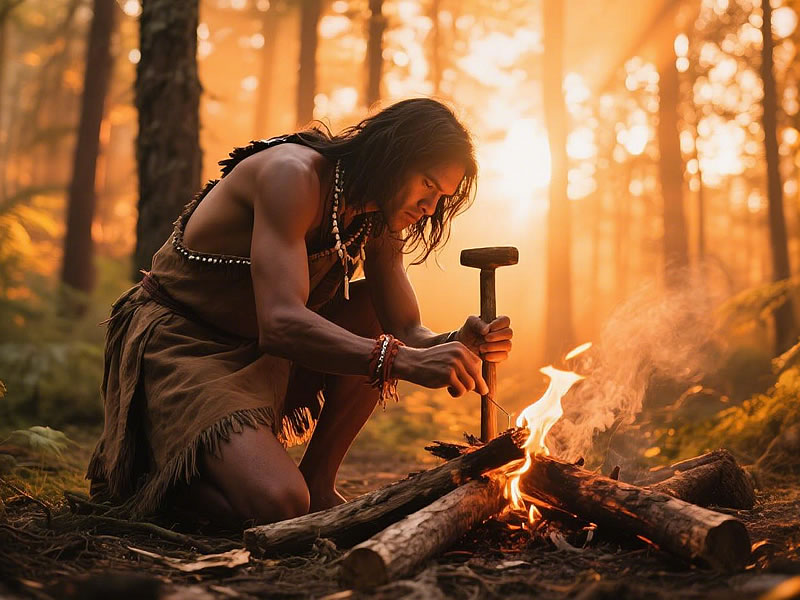How to light a camping stove without matches?
Losing your matches or lighter in the wilderness doesn’t mean you’re doomed to cold meals. Whether you’re facing a survival situation or simply testing your bushcraft skills, mastering alternative fire-starting methods is essential. This guide covers 7 reliable techniques to ignite your camping stove safely, even in rain or wind—plus pro tips to avoid common pitfalls.

Why Prepare for Matchless Ignition?
- Emergency Readiness: 23% of backcountry emergencies involve failed fire starters (NPS data)
- Fuel-Specific Needs: Some stoves (e.g., liquid fuel) require preheating flames
- Skill Building: Bushcraft confidence grows with these techniques
Method 1: Flint and Steel (Best for Reliability)
Tools Needed:
- High-carbon steel striker
- Ferrocerium rod (UCO Titanium Strike Light)
- Tinder: Char cloth, dry grass, or birch bark
Steps:
- Hold the rod close to the stove’s burner.
- Strike the steel at a 45° angle, directing sparks onto tinder.
- Transfer the glowing ember to the fuel source.
Pro Tip: Wrap tinder in aluminum foil to shield from wind.
Method 2: Battery + Steel Wool (Instant Flame)
Tools:
- 9V battery
- #0000 grade steel wool
Steps:
- Stretch the steel wool into a thin strip.
- Touch the battery terminals to the wool—it’ll spark and ignite.
- Place the burning wool under the stove’s burner.
Caution: Works only with unregulated stoves (no safety valves).
Method 3: Magnifying Lens (Solar Power)
Tools:
- Fresnel lens (SOL Fire Lite)
- Clear plastic water bottle (emergency lens)
Steps:
- Angle the lens to focus sunlight into a pinpoint on the stove’s fuel source.
- Hold steady until smoke appears, then gently blow to grow flames.
- Ideal for alcohol stoves or priming liquid fuel.
Best Conditions: Sunny days between 10 AM–2 PM.
Method 4: Piezo Igniter (Built-In Spark)
Tools:
- Stove with piezo ignition (e.g., Fire-Maple FMS-118)
Steps:
- Turn the fuel valve to release gas.
- Press the igniter button repeatedly—sparks will light the gas.
- Adjust flame as needed.
Note: Test igniters pre-trip; replace dead units with Lixada Piezo Lighter.
Method 5: Fire Plough (Primitive Friction)
Tools:
- Softwood base (cedar, pine)
- Hardwood stick (oak, hickory)
Steps:
- Carve a groove into the softwood.
- Rapidly rub the hardwood stick along the groove to generate embers.
- Transfer embers to tinder nest, then to stove.
Survival Hack: Add powdered resin to the groove to lower ignition temp.
Method 6: Chemical Fire (Emergency Only)
Tools:
- Potassium permanganate + glycerin
- Or: Calcium hypochlorite (pool shock) + brake fluid
Steps:
- Place a pea-sized amount of potassium permanganate on a rock.
- Add 2–3 drops of glycerin—it’ll combust in 10–15 seconds.
- Use tongs to position the flame under the stove.
Warning: Toxic fumes—use only in life-or-death scenarios.
Method 7: Spark Plug + Steel (Mechanic’s Trick)
Tools:
- Old spark plug
- Car battery (or power bank with jumper cables)
Steps:
- Attach spark plug wires to the battery.
- Hold the plug near the stove’s fuel source.
- Tap the terminals—sparks will ignite fuel vapor.
Pro Safety Guidelines
- Never Inhale Fumes: Stove fuels release toxic gases when cold-ignited.
- Wind Management: Use a DIY foil windscreen to protect fledgling flames.
- Extinguish Fast: Keep sand or a fire blanket ready to smother flare-ups.
FAQs
Q: What’s the fastest method in rain?
A: Flint/steel with waterproof tinder (cotton balls soaked in vaseline).
Q: Can I use a smartphone screen as a lens?
A: No—phone screens diffuse light. Use eyeglasses or a water-filled balloon instead.
Q: How to light an alcohol stove without matches?
A: Solar lens or battery/steel wool work best—alcohol vapor ignites at 63°F.
Essential Gear for Matchless Ignition
- UCO Titanium Stormproof Match Kit (backup)
- Light My Fire Swedish FireSteel
- SOL Survival Spark Lite
- Adventure Medical Kits Heatsheets (emergency reflector)
The Survivalist Mindset
Practice these methods at home before relying on them in the wild. Remember: Fire-starting is 80% preparation and 20% technique. Pair these skills with a stormproof tinder kit (we recommend Vargo Titanium Tinder Box), and you’ll never face a cold camp again.
Stay ignited, stay safe, and conquer the elements!






